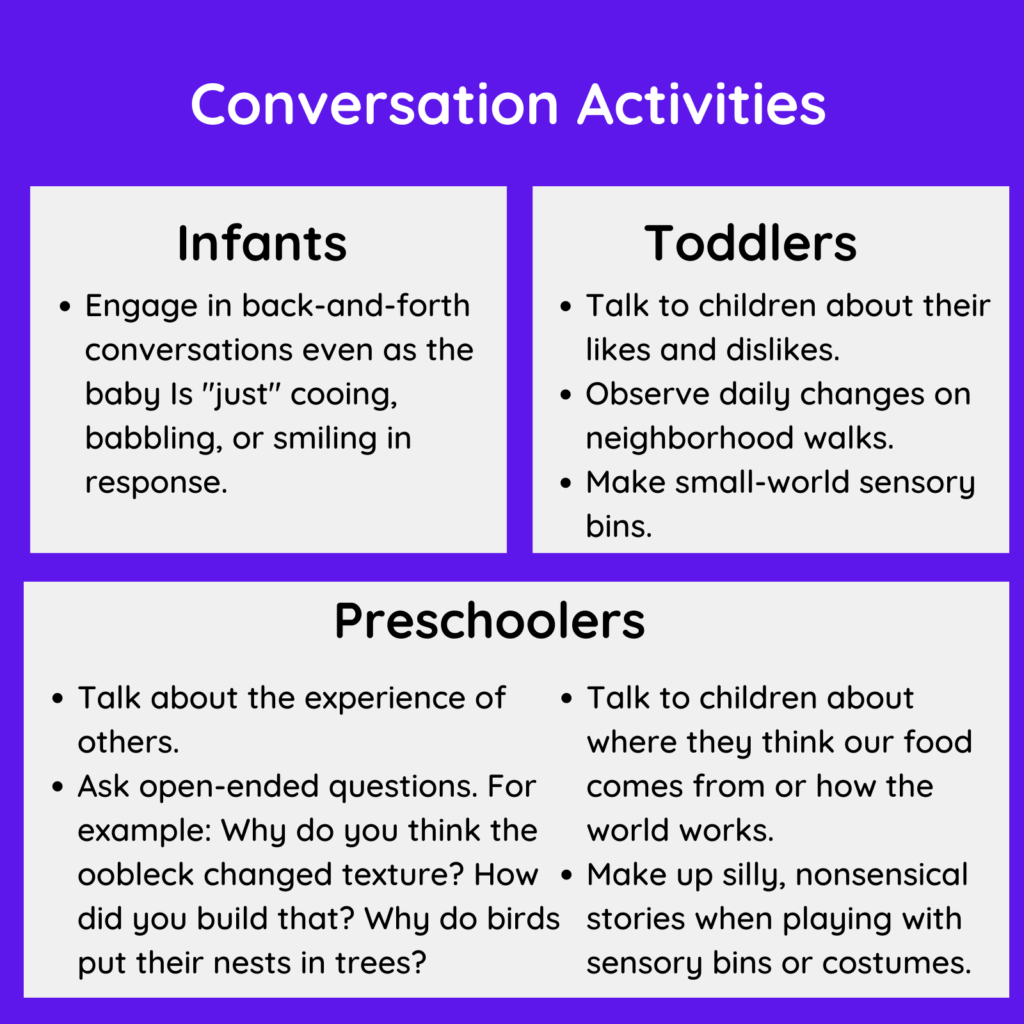
First, to talk about the importance of having conversations with young children, let’s begin by discussing the value of what developmental researchers have described as “Serve-and-Return” interactions. This is terminology coined by scientists and developmental experts at the Harvard Center for the Developing Child, a research center dedicated to generating, translating, and disseminating scientific knowledge about child development. Serve-and-return interactions are the warm, responsive back and forth exchanges between a caregiver and a child that are crucial for their early brain development. When a caregiver gazes at an infant and says “Hello sweet smiling baby, you are a ray of sunshine!”, the infant might indeed smile back in return with babbles or cooing, to which the caregiver responds with more kind and warm conversation. These interactions are quite impactful for the child’s developing brain, particularly as it relates to language: they are hearing the sounds of the language that they will start to develop in their early toddler years, they hear the sing-song aspect of sentences spoken, they see the way the muscles in the face develop, and they are even learning that when they participate (in this instance, by cooing and babbling) it elicits even more of a response from their caregiver.
Language is incredibly empowering, particularly in the toddler years, as it can be the greatest tool in preventing tantrums, or can help caregivers interpret what a child might like or dislike. This is why it is important to have rich conversations with children in non-stressful times, ideally during play or bonding (like cuddling and reading a book before bed), so that when the highly emotional time comes, they already have some of the language they will need. Throughout the Rayz Kidz app, we have conversation prompts to discuss with children, which is a great way for them to connect the greater world to their own lives, express themselves, and build their language around things that matter to them. While they may not respond at first, or might just respond with one-word answers, that is okay—they will get used to being asked questions and will start to respond with richer language in the form of more advanced vocabulary, better grammar, and a worldview that considers the experience of others in addition to their own.
For example, let’s imagine that we are making mini-refrigerators as part of our Farm-to-Table theme. With this activity, you can invite toddler and preschool aged children to draw their favorite foods on a little cardstock refrigerator, which is an open-ended art activity that is fun to do (even for adults!). A toddler might just scribble on their refrigerator and respond with “puffs” when you ask what their favorite food is. This is a great chance to ask if they like broccoli, or if they like any specific fruits. They might not answer, but that is okay! Because with practice, the conversation will grow. For example, a preschool-aged child might draw a fridge packed with cookies or candy—which leads to a great conversation about healthy eating. They might draw the favorite foods of their family members, which is a great chance to talk about their loved ones. Or, you might draw some foods from your culture in your own fridge, and you can discuss about how to be polite when trying new food that is meaningful to someone else. This is just one sample activity to demonstrate the ways that we can build language through play, but check out the Rayz Kidz app for more tips!

For more activities that help build ability to have conversation, visit rayzkidz.com/category/activities